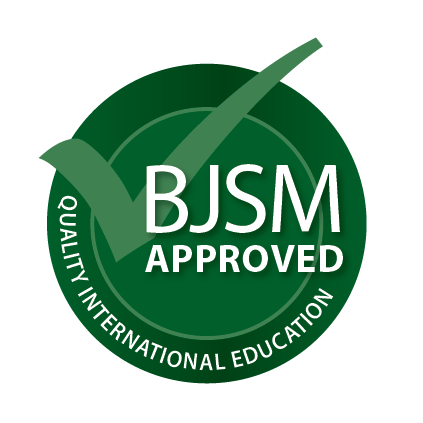By Kevin Nordanger @KevinNordanger

“The Times They Are a-Changin'” sang Bob Dylan back in 1964. That’s never been truer in the context of learning. We are now in 2019 and clinicians around the world are using digital media (and especially social media) to learn more about physiotherapy.
I have always had an interest in using social media for knowledge translation, and started experimenting with this back in 2015 when I created the “Rethinking Physiotherapy” platform. It has since gained a following of around 250 000 people on Facebook and Instagram. The goal is, and has always been, to help translate research into clinical practice by making relevant resources and research available to those who wish to acquire it.
After years of posting and engaging with physiotherapists around the world through social media, it became obvious that many had a hard time keeping up with the latest research. Several barriers were identified:
- The amount of new research constantly being published. If you search for articles on PubMed which include the word “Physiotherapy” you will see that nearly 8000 articles were published in 2018 alone (see the photo below)
- The amount of existing research is overwhelming
- Accessing research is expensive
- Clinically relevant papers are hard to find
- Analysing and interpreting primary research is both difficult and time consuming

Time lags in research translation
The barriers above may explain some of the time lag observed in the translation of research into practice. A meta-analysis from 2011 aimed to review the literature describing and quantifying time lags in the health research translation process.(1)They found that it takes on average 17 years for research to translate into practice, but the studies they included were very heterogeneous. It is therefore difficult to estimate time lags with any certainty. This paper was also published before social media started to gain a foothold, which may affect translation times. Regardless, it seems that translating research into practice is a very protracted process and finding ways to expedite it is of benefit to health care practitioners and their patients.
The birth of Physio Network
Jason Cunden and Timothy Rowland are two colleagues of mine who have been using social media for years to disseminate research-related information.We spent a lot of time discussing the challenges we were seeing, and potential solutions. We strongly believe that clinical practice should be evidence-based and that we owe it to our patients to keep up to date. However, we also recognise that it can be difficult. The obvious importance of keeping up to date, coupled with the challenges of doing so, is what gave rise to Physio Network.
Our audacious goal is to improve physiotherapy standards worldwide.
We aim to do this through a variety of ways:
- Research reviews
We created a monthly subscription service featuring some of the latest and most clinically relevant research in physiotherapy. Our team of experts now consists of 34 internationally known clinicians and researchers who critically appraise, summarise and deliver their own informed perspectives. They make it easier to understand and apply the very latest research within musculoskeletal, sports and orthopaedic physiotherapy.
Each monthly issue includes 12 reviews, and supporting videos. Every review is recorded so that they can be listened to as well. Our issues have an accompanying quiz to ensure key points from the research are tested and understood. Passing the quiz results in a downloadable certificate of completion for the reader. The Physio Network research reviews also counts for continuing education points (CPD/CEU). We have received the BJSM Stamp of Approval for Quality Education.

- Social media
We are very active on social media and have gained around 100K followers in total on Facebook, Instagram and Twitter. This gives us a unique opportunity to share research-related information and reach many physiotherapists around the world. We hope this might assist the research translation process. Our Facebook community group has grown to house over 9000 members who can connect and learn from each other on a daily basis.
- Free resources
Our growing selection of free resources can be accessed on our website. They are designed to facilitate professional development, and include:
- Research reviews
- Audio reviews
- Blogs (more than 55 and counting)
- Clinical pearls
- Infographics
It’s exciting to see the learning opportunities now available to physiotherapists given the rise of digital media. There are definitely benefits and threats to this, as outlined in a recent editorial in JOSPT. (2) We strive to play our part by ensuring that our contributions are accurate, evidence-based and of clinical value. Ultimately, we want to help improve physiotherapy standards by ensuring more physios are evidence-led in their daily practice. For the benefit of not only the patient, but also the profession.
You can visit our website here and learn more about our project: https://physio-network.com
***

Kevin Nordanger @KevinNordanger, BSc (Hons),is a Norwegian physiotherapist. He currently works at Nimi (Norsk idrettsmedisinsk institutt) in Oslo, Norway. Kevin is the founder of Rethinking Physiotherapy (on Facebook and Instagram) and @physionetwork.
References:
- Slote Morris, Z., Wooding, S., & Grant, J. (2011). The answer is 17 years, what is the question: understanding time lags in translational research. Journal of the Royal Society of Medicine, 104(12), 510–520. https://doi.org/10.1258/jrsm.2011.110180
- Cook, C., O’Connell, N., Hall, T., George, S., Jull, G., & Wright, A. et al. (2018). Benefits and Threats to Using Social Media for Presenting and Implementing Evidence. Journal Of Orthopaedic & Sports Physical Therapy, 48(1), 3-7. doi: 10.2519/jospt.2018.0601